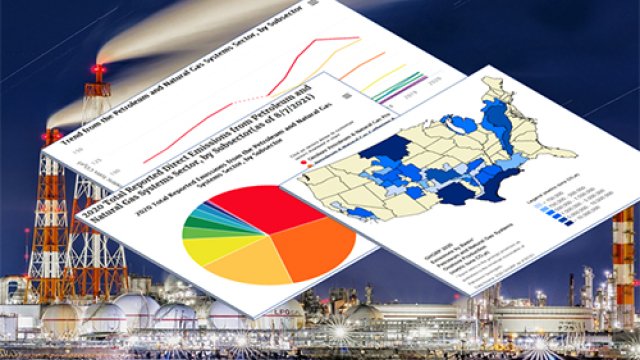Methane Emissions Reduction Program
The Inflation Reduction Act provides new authorities under Section 136 of the Clean Air Act to reduce methane emissions from the petroleum and natural gas sector through the creation of the Methane Emissions Reduction Program. This program will help reduce emissions of methane and other greenhouse gas (GHGs) from the oil and gas sector and will have the co-benefit of reducing non-GHG emissions such as volatile organic compounds and hazardous air pollutants. The program will also reduce emissions from oil and natural gas infrastructure in or near overburdened communities where people live, work, and go to school. To learn more about program benefits, view or download the Methane Emissions Reduction Program Infographic (pdf) (690 KB).
The Methane Emissions Reduction Program provides $1.36 billion in financial and technical assistance through multiple funding opportunities, establishes a Waste Emissions Charge (WEC) for methane, and requires EPA to revise the Greenhouse Gas Reporting Program (GHGRP) subpart W regulations for the oil and gas sector.
-
Financial Assistance

Partnering to provide $1.36 billion to accelerate methane and other GHG emissions reductions in the oil and natural gas sector.
-
Waste Emissions Charge (WEC)

A charge on wasteful methane emissions from oil and gas facilities.
-
Technical Assistance

Assistance and resources to improve methane emissions monitoring, detection, measurement, and quantification.
-
GHGRP Subpart W

Revisions to subpart W of the GHGRP, as mandated by the Inflation Reduction Act.
Upcoming Events
Upcoming events for the Methane Emissions Reduction Program are identified in the table below. These include events supporting financial and technical assistance, the waste emissions charge (WEC), and Greenhouse Gas Reporting Program (GHGRP) Subpart W. Please sign up for the program mailing list to receive information about future events.
Stay tuned for more information about future events!
For past events, including recordings and related materials, information is available on the Financial and Technical Assistance, WEC, and GHGRP Subpart W webpages.
Past Program News
- August 26, 2024 - EPA announces a Request for Information on use of advanced technologies for quantification of methane in the GHGRP
- August 19, 2024 – EPA issues a technical correction notice to make minor technical corrections to the subpart W rule
- June 21, 2024 – EPA and DOE Announce $850 Million Available to Reduce Methane Pollution from the Oil and Gas Sector
- May 6, 2024 – EPA Announces Final Rule to Strengthen and Update Greenhouse Gas Emissions Reporting for the Oil and Gas Sector
- February 9, 2024 – EPA and DOE Announce Intent to Fund Projects to Reduce Methane Emissions From the Oil and Natural Gas Sectors
- January 12, 2024 – Biden-Harris Administration Announces Proposed Rule to Reduce Wasteful Methane Emissions
- December 15, 2023 – Biden-Harris Administration Announces $350 Million in Funding to 14 States
- August 30, 2023 – Biden-Harris Administration Announces Availability of $350 Million in Grants to States
- July 24, 2023 – EPA and DOE Announce Intent to Fund Efforts to Reduce Methane Emissions
- July 6, 2023 – EPA Proposes Updates to Greenhouse Gas Emissions Reporting Requirements
- June 30, 2023 – EPA and DOE Announce Partnership to Provide More than $1 Billion to Reduce Methane Emissions
- November 4, 2022 – EPA published a Request for Information (RFI) seeking public comment on a set of non-regulatory dockets to collect responses to a range of questions including those related to the Methane Emissions Reduction Program. View public comments submitted at Regulations.gov Docket ID EPA-HQ-OAR-2022-0875. This docket closed on January 18, 2023.
Additional Resources
- Methane Emissions from the Oil and Gas Sector
- Methane Mitigation Technologies Platform
- U.S. Methane Emissions Reduction Action Plan (pdf)
- Global Methane Initiative (GMI)
Contact the Methane Emissions Reduction Program
Send questions to [email protected].
To stay connected, sign up for our mailing list!
For media or press inquiries, please visit EPA’s Media Contacts site for more information.
